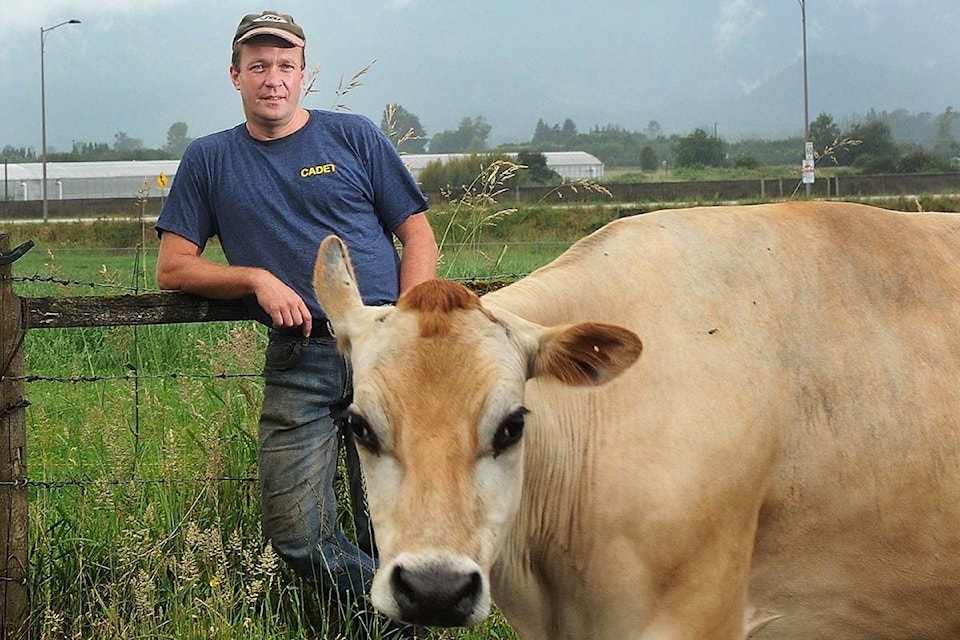Local farmers are not worried despite the demotion of dairy products and meat in the new Canada Food Guide.
This is the first time the guide has been overhauled in more than a decade. The last revision was done in 2007 when it was titled Eating Well With Canada’s Food Guide.
Gone, now, are the four basic food groups. They have been replaced by a dinner plate graphic showing fruits and vegetables on half , a quarter reserved for protein foods and the other quarter for whole grains.
The new guide advises Canadians to be mindful of their eating habits, to cook more often, to enjoy their food, eat meals with others, read food labels, limit foods high in sodium, sugars and saturated fat and to be aware of food marketing.
The guide also advises people to choose protein foods that come from plants more often and to make water your drink choice.
Although she has only seen the plate graphic, Eileen Dwillies, former executive director of the Haney Farmer’s Market, is not surprised by the new guide.
“This is very much what they have always talked about. Vegetables and fruit which, of course at the farmer’s market, that’s what we have. And we always believe in buying from local people so you know where your food came from,” she said, adding that protein portions have always been talked about being the size of the palm of your hand.
Dwillies also noted that dairy is still in the guide because it contains certain things that the body needs.
Mostly she is pleased that people with vested interests had no part in creating the guide.
Lionel and Barb Robin, owners of Long Rider Ranch in Chilliwack, sell their beef at the local Haney Farmer’s Market in Memorial Peace Park.
Lionel is disappointed but believes that new food guide portions will not affect his business because his customers are meat eaters already and purchase his beef because they like it.
He says it is the care they give to their cows that makes the difference for their small, three-year-old operation. The nine cows they have on the farm right now always have space, shelter, fresh water and are fed a balanced diet.
“I do disagree with the Canada Food Guide. I just can’t see that in the long term as being bad for you. Dairy or meat,” he said.
However, Lionel agrees with the guide in that portion size is important, that eating too much beef in one sitting is not good for a person. He also likes the message of buying fresh produce, cooking at home and enjoying your food.
Matthew Laity, whose family dairy farm on Golden Ears Way was founded in 1879, is not surprised by the dairy industry’s food guide snub, but he is also disappointed.
Laity, who made the switch to organic milk production in 2017, said it’s been “blow after another blow” to the industry, especially since the outcome of the trade deal Canada recently made with the United States.
“I’m not sure how much of an affect the food guide does have on consumption,” pondered Laity.
“(I’m) disappointed that they’ve judged it this way. Drinking milk has fallen in popularity for sure even though it is still a very complete nutritious, an excellent sports drink, it’s got everything,” he said, adding that milk production is only half of the business.
“(There’s) still cheese, ice cream, all the other dairy products, yogurt. There’s so much more than just a glass of milk,” said Laity.
Laity is encouraged, though, by the public support he has received for Canadian dairy farmers.
“I’ve never seen people so interested in finding out if their product actually comes from Canada or not,” he said noting that in Canada the dairy industry is generally still made up of small family farms unlike the model in the States where milk production has, “really become quite industrial.”
Laity is sticking with his organic dairy farm. But, he said, it’s his sole source of income, so decisions like what is or is not included in the government food guide, really matter.
